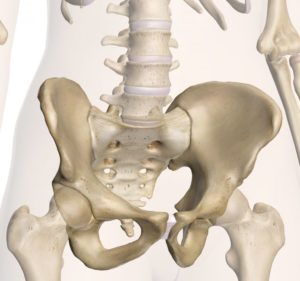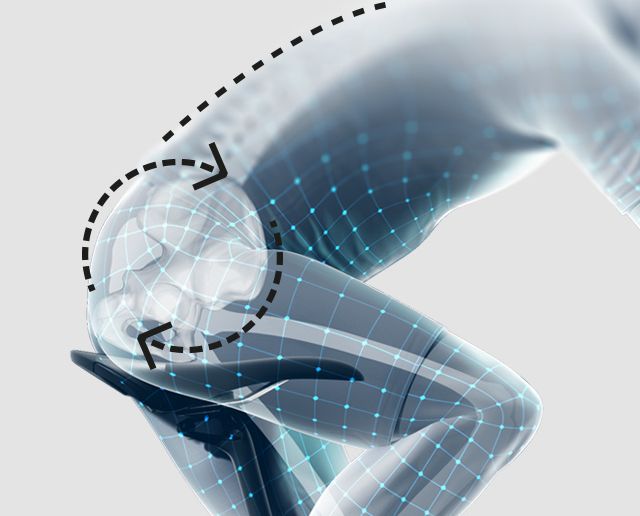Previous posts in this series have explained: 1. saddle materials, 2. padding thickness (and softness), 3. saddle shapes and 4. measuring one’s sit bone width. This post explains how to choose an optimal saddle width. Apologies in advance if some parts resemble an anathomy notebook. 🙂 The last chapter (5.) gives a simple formula and the reader can jump straight to it. Previous chapters are given to provide an explanation why it is so. Because choosing a saddle is very individual and can hardly be put in a formula, the given explanation can help in search of a good fitting saddle (as well as the previous four posts on this topic).
If you are having problems (discomfort) with your current saddle, I suggest you also read the article about fixing bicycle saddle discomfort.
TL/DR
Measure your sit bone width, and add from zero to four cm to that (chapter 5), depending on how upright you are sitting on the bicycle (zero is for super-TT-aero, and +4 is for fully upright sitting).
This article explains the reasons why that works, with a few nuances, and finishes with some saddle models that I like (but saddle choice is very subjective, which is why I bothered with this whole saddle article series, instead of just giving you a shopping recommendation).
1. Why is it important to choose an optimal saddle width?
After choosing a saddle material, padding and shape, it is important to choose an optimal saddle width. A saddle that is too wide can cause thigh chafing and irritation, while a too narrow one can cause discomfort in the pubic area.
2. Prerequisites needed for determining the optimal saddle width
When choosing an optimal saddle width, two factors are important:
- Sitting position (how straight/leaned forward is one riding)
- Sit bone width
Sitting position can be straight (back at a 90 degree angle), slightly leaned (60 degree angle), more leaned/”aggressive” (about 45 degrees), or (almost) completely flat forward – see picture 1.

Sitting position on a bicycle (upper body lean angle)
Source: www.selleroyal.com
Measuring sit bone width is explained in the post: Measuring sit bone width. Sit bone width is an obvious factor when choosing a saddle width, but why is the sitting position important? That is explained in the next chapter:
3. Sit bone curvature
Sit bones have a curved shape, narrowing from the rear towards the front. Shown in picture 2.

Sit bones
Source: http://www.innerbody.com
Saddle should provide support of the sit bones, so that body weight is not distributed over some other, more sensitive body parts. As the body is leaned forward, sit bones usually rotate forward as well (more, or less, depending on rider’s flexibility).

Inflexible rider in a leaned forward position. Pelvis is rotated forward.
Source: www.fizik.com
As the pelvis is rotated forward (picture 3), a narrower part of the pelvis is leaned on the saddle (picture 2). That is why the optimal saddle width depends on the riding position (picture 1).
Picture 4 shows this on a pelvis model:

Part of the seat bones (width) that is leaned on the saddle, depending on the riding position (lean angle)
Source: www.sq-lab.com
Saddle that is too narrow for an upright sitting position can be of optimal width for a leaned forward riding position, and vice-versa (picture 5).

Saddle on the left is too narrow for an upright riding position, while the saddle on the righ is too wide for a leaned forward riding position.
Source: www.cervelo.com
4. Usable saddle width
Manufacturers usually note saddle width in milimeters on the part of the saddle where it is the widest. However, depending on saddle shape, not all of this width can be used to support the body (sit bones). The more a saddle is curved, the more it is important to make note of this.

Total vs usable saddle width.
Source: www.sq-lab.com
Excess width is often important – but for reasons other than supporting the body. It has it’s merits in centering the rider on the saddle, eliminating sharp (chafing) edges, leaving the padding some room to flex etc. For this reason, width of the saddle (or the part of the saddle the sit bones are leaned on) should be at least two cm (one cm to each side) greater than the width of the part of the sit bones that are leaned on it.

Sit bone contact width and total saddle width
Source: www.cervelo.com
Sounds complicated, it is simplified in the following, last, chapter.
5. Which saddle width, get to the point?!
Picture 8 speaks more than a thousand words:

Sit bone width plus how much depending on the sitting (riding) position
Source: www.sq-lab.com
Picture 8 shows a simple guide: how many cm to add to the measured sit bone width in order to get an optimal saddle width.
For example, if a road bike is used, with very leaned forward position (like in the 2nd drawing from the left in picture 8), and if measured sit bone width is 125 mm, then a saddle should be 1 cm (10 mm) wider, which is about 135 mm.

Same saddle model (and shape) in various different widths
Source: www.sq-lab.com
It should be noted that this too is just a guide, a starting point when trying out new saddles. Optimal saddle width is also individual. Some riders prefer “one size” wider saddles, while others prefer slightly narrower.

When trying out a new saddle, give it a week or two time for the body to adapt, then decide whether it is comfortable or not. Once one, finally, finds a very good fitting saddle, it is best to buy 3-4 saddles at once, since shapes and models are changed almost every year. That way the search for a perfect saddle can be avoided for a long time.
6. Bicycle saddle models recommendations
Before buying, I suggest reading the other 4 short articles in this 5 article series (this one being the last, 5th):
- Bicycle saddle fit [01] Materials they are made of
- Bicycle saddle fit [02] Saddle padding
- Bicycle saddle fit [03] Saddle shape
- Bicycle saddle fit [04] Measuring sit bone width
- Bicycle saddle fit [05] Optimal saddle width
- My bicycle saddle is uncomfortable, what should I do?
For a concrete model recommendation, if it is of any help (though saddle choice is very subjective), these have served me very well over the years (using Amazon affiliate links):
An excellent MTB saddle is Selle Royal model Suez.

A rather athletic saddle, but its padding is not too hard, so they are comfortable even without the use of padded cycling shorts (bibs) – Amazon affiliate link. It is cut out in the middle, to eliminate any pressure on the “sensitive parts” of both men and women (for the latter claim I’m relying on the feedback I got from female cyclists who have used this model – just look at my pronouns 🙂 ).
An excellent saddle for city bicycles (and all the others with a more upright sitting position), is Brooks model Flyer.

Brooks Flyer is a bit heavier (steel frame, with leather). But thanks to its shape, and the springs at the rear, it is very comfortable, even on extremely long rides (cyclo-touring etc.). Springs are very hard, so you won’t be bouncing when pedalling, but they will absorb any harsh road shocks (bumps, potholes). The leather is great for the summer, but can feel a bit colder in the winter (compared to synthetic materials), and it can get soaked if left in the rain. So I’d avoid this for very wet, or cold climates.
Finally, a road bicycle recommendation – Fizik Antares R3 Open K:IUM Regular black

If you have any questions (or additions and corrections), please use the BikeGremlin forum:
www.bikegremlin.net
Last updated:
Originally published:

This is super-useful info. Thank you from Canada for taking the time to share this.